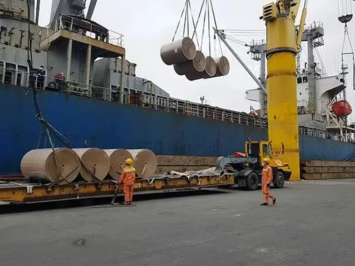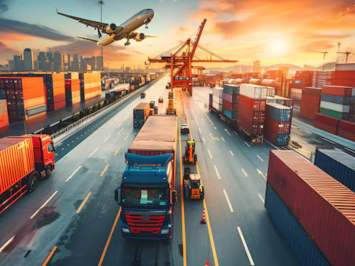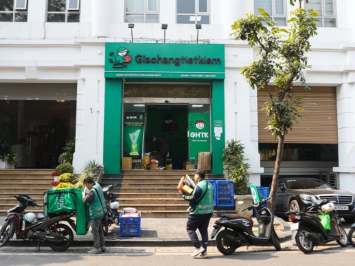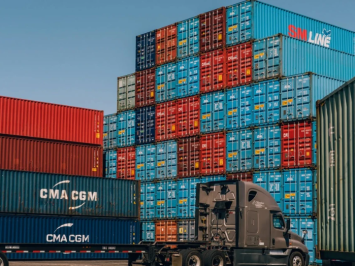Việt Nam is stepping up efforts to attract major investment in green energy, opening up significant opportunities for both domestic and international enterprises amid surging power demand.
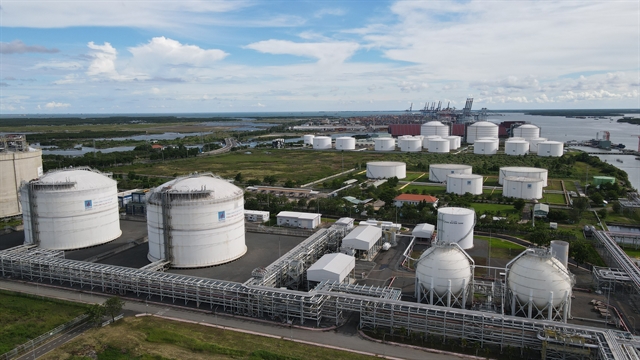
Thị Vải LNG terminal in Bà Rịa-Vũng Tàu Province. — VNA/VNS Photo
HÀ NỘI — As climate change continues to pose a global challenge and countries move to fulfil their net-zero commitments, Việt Nam is taking decisive steps to diversify its clean energy sources, strengthen energy security, and promote sustainable growth.
These efforts not only encompass the energy transition and the development of renewables and liquified natural gas (LNG) power but also extend to economic instruments such as carbon markets and attracting major corporate investments.
At COP26, Việt Nam pledged to achieve net-zero emissions by 2050 — a commitment underscoring the country’s determination to contribute to the global climate agenda.
Director General of the Department of Climate Change Tăng Thế Cường said this goal would be implemented primarily through a strong domestic energy transition and greenhouse gas reduction, supported by international cooperation and funding.
One of the key mechanisms supporting this transition is the development of a carbon market. The 2020 Law on Environmental Protection has laid a legal groundwork for carbon trading, requiring greenhouse gas-emitting entities to measure and trade carbon credits.
Subsequently, Decree No. 06/2022/NĐ-CP provides further guidance on the carbn market’s organisation and operation. In January, the Prime Minister approved a scheme to establish and develop a domestic carbon market, with pilot operations beginning this year and full implementation expected after 2028.
“While Việt Nam’s compliance carbon market is still under construction, domestic businesses have participated in voluntary carbon markets since the mid-2000s through mechanisms such as the Clean Development Mechanism (CDM) from 2006, the Gold Standard and Verified Carbon Standard (VCS) from 2008, and the Joint Crediting Mechanism (JCM) with Japan since 2013,” Cường added.
LNG: a crucial pillar
Alongside renewables, Việt Nam is accelerating the development of LNG power as a key transitional energy source on the pathway to lower emissions.
Deputy General Director of PV GAS Nguyễn Phúc Tuệ said that, under the Power Development Plan VIII, Việt Nam aims to build 23 gas power projects by 2030, including 13 using imported LNG, with a total capacity of about 22,400MW and peak demand reaching 15 million tonnes per year.
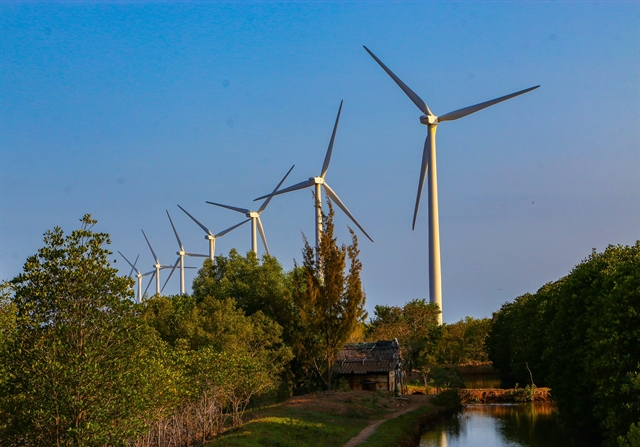
The Bạc Liêu Wind Power Plant in Bạc Liêu Province. — VNA/VNS Photo
However, Tuệ acknowledged delays in project implementation, noting that actual LNG demand by 2030 may only reach 3–4 million tonnes per year.
In this context, the Government’s decision to cut LNG import tariffs from 5 per cent to 2 per cent under Decree No. 73/2025/NĐ-CP is seen as a positive move, enabling access to LNG sources from non-FTA countries. “This reduction will allow PV GAS to diversify its LNG supply portfolio, optimising costs for LNG power plants and industrial consumers — ultimately benefitting end-users,” Tuệ emphasised.
PV GAS is concurrently developing key infrastructure including the Thị Vải LNG terminal, a floating storage and regasification unit (FSRU), and LNG hubs across the central and northern regions. It has also signed framework agreements with major global LNG suppliers such as Shell, Total, Petronas, Sumitomo, PetroChina and US partners. In 2024, PV GAS supplied regasified LNG to EVN at prices 15 per cent lower than global market averages.
Investment in renewables and LNG
Việt Nam is also ramping up efforts to attract large-scale investment in clean energy. Vingroup, one of the country’s leading private conglomerates, recently proposed investing US$30 billion between 2025 and 2030 to develop 25,500MW of renewable energy and 5,000MW of LNG power. An additional 27,000MW is expected in the 2031–2035 phase.
Trần Anh Thái, deputy general director of ATS JSC, highlighted the need for clear, long-term and stable policy frameworks, noting that energy sector investments are costly, time-consuming, and slow to recoup capital. He also stressed the importance of a specialised workforce, sufficient financing, and appropriate technology selection.
Thái pointed to the United Arab Emirates (UAE) as a benchmark, where a 2GW solar project recently began operations with a record-low tariff of just $0.0132 per kWh.
This issue becomes more urgent in light of the draft National Power Development Strategy to 2030. Under the base scenario, Việt Nam will need to invest approximately $136.3 billion from 2026–2030 — equivalent to $27.3 billion per year. In higher growth scenarios, annual investment requirements could rise to $36.5 billion or even $40.7 billion. To meet its ambitious energy development goals while supporting economic growth, Việt Nam has little choice but to diversify its clean energy sources — from solar and wind to LNG and biomass. Achieving this will require a suite of coordinated policies, from financial incentives and regulatory stability to infrastructure development and carbon market mechanisms.
Tuệ concluded: “Finalising a coherent mechanism for LNG offtake to serve power generation is critical. It will help unlock LNG power projects, add valuable ‘green’ electricity to the grid, ensure national energy security, support the energy transition, and fulfil Việt Nam’s net-zero commitment by 2050.”









![Detailed Guide to Chemical Import Procedures [Updated 2025]](https://songwinlog.net/thumbs/355x266x1/upload/news/ve-tay-hinh-tron-logo-2-3776.png)

